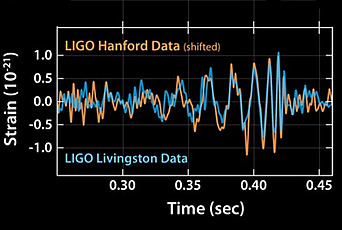How Incompatible Worldviews Can Coexist

John Brockman, founder and proprietor of the Edge website, asks a question every New Year and invites the public to answer it. THE EDGE QUESTION 2012 was, “What is your favorite deep, elegant, or beautiful explanation?” He got 150 answers that are published in a book, This Explains Everything (Harper Collins, 2013). Here is my contribution.
The situation that I am trying to explain is the existence side by side of two apparently incompatible pictures of the universe. One is the classical picture of our world as a collection of things and facts that we can see and feel, dominated by universal gravitation. The other is the quantum picture of atoms and radiation that behave in an unpredictable fashion, dominated by probabilities and uncertainties. Both pictures appear to be true, but the relationship between them is a mystery.
The orthodox view among physicists is that we must find a unified theory that includes both pictures as special cases. The unified theory must include a quantum theory of gravitation, so that particles called gravitons must exist, combining the properties of gravitation with quantum uncertainties.
I am looking for a different explanation of the mystery. I ask the question, whether a graviton, if it exists, could conceivably be observed. I do not know the answer to this question, but I have one piece of evidence that the answer may be no. The evidence is the behavior of one piece of apparatus, the gravitational wave detector called LIGO that is now operating in Louisiana and in Washington State. The way LIGO works is to measure very accurately the distance between two mirrors by bouncing light from one to the other. When a gravitational wave comes by, the distance between the two mirrors will change very slightly. Because of ambient and instrumental noise, the actual LIGO detectors can only detect waves far stronger than a single graviton. But even in a totally quiet universe, I can answer the question, whether an ideal LIGO detector could detect a single graviton. The answer is no. In a quiet universe, the limit to the accuracy of measurement of distance is set by the quantum uncertainties in the positions of the mirrors. To make the quantum uncertainties small, the mirrors must be heavy. A simple calculation, based on the known laws of gravitation and quantum mechanics, leads to a striking result. To detect a single graviton with a LIGO apparatus, the mirrors must be exactly so heavy that they will attract each other with irresistible force and collapse into a black hole. In other words, nature herself forbids us to observe a single graviton with this kind of apparatus.
I propose as a hypothesis, based on this single thought-experiment, that single gravitons may be unobservable by any conceivable apparatus.
If this hypothesis were true, it would imply that theories of quantum gravity are untestable and scientifically meaningless. The classical universe and the quantum universe could then live together in peaceful coexistence. No incompatibility between the two pictures could ever be demonstrated. Both pictures of the universe could be true, and the search for a unified theory could turn out to be an illusion.
Recommended Reading: Freeman Dyson was awarded the 2012 Henri Poincaré Prize at the International Mathematical Physics Congress in August. On this occasion, he delivered the lecture “Is a Graviton Detectable?” a PDF of which is available at http://publications.ias.edu/poincare2012/dyson.pdf.


